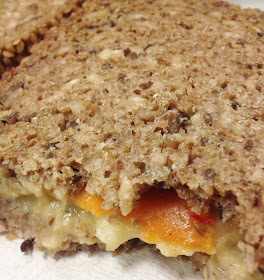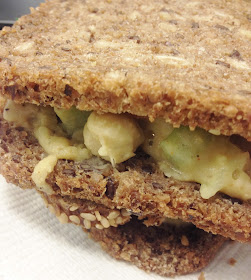 |
| "Vignette (Wishing Well)," acrylic and glitter on PVC panel, 2010. |
Kerry James Marshall is one of my favorite painters in the world. No shadow of doubt exists when it comes to an ardor for someone whose mind and talents are greatly matched together.
In a methodical land of daring pitch black skinned figures adorned with fragrant bloom that one can almost smell in flared nostrils, a sentimental viewer finds profound seduction in subjects Marshall majestically paints. At Met Breuer, gracing walls with marvelous retrospective, arrests these compositions-- like glittering oyster pearls-- to the starry eyed visionary who dares to read between lines of pure, titillating insertion. For the stories told in every single piece shares and denotes a specific history, a stolen moment illustrating the African American experience. From romance stories to barber shops to renaissance artists, acrylic painted portrayals are sincere, poignant, and quite triumphant in their pursuits of revealing who we are, who we dare dream to be.
 |
| "Vignette IV," acrylic on PVC panel, 2005. |
 |
| "Untitled (Vignette)," acrylic and glitter on PVC panel, 2012. |
 |
| Close up. |
Marshall works in a series way. Each section centers on different approaches to certain subject matter. For example, the Vignette groupings share intimate moments between black bodies in picturesque scenery, having a John Singleton's
Boys In the Hood meets
Poetic Justice vibe that enhances these pivotal moments between a man and woman. Black men are strong, chivalrous, and charming and black women are bold, tender, and sensual-- this makes a perfect, unquestionable balance. In sparkling, utterly endearing "Untitled (Vignette)," backs facing away, bodies melding together on grassy meadow, an afro pick in a flawless small afro, two glitter red hearts above heads, birds singing "la la la," a tire swing hanging on a love tree in the distance.
 |
| "Untitled (Beach Towel)," acrylic on PVC panel, 2014. |
While known for being a gifted painter, Marshall spread his wings into the comic realm, depicting African Americans as superheroes in their natural habitats. In his "Rythm Mastir" lightbox series, his signature graphic style easily translates into the realm of comic book aesthetic, sharp contrasting values and heartfelt narrative are featured on earth and the space cosmos. It is the artist's purpose to evaluate and dismantle the wrongs of popular culture. By giving blackness inclusivity, leading protagonists and antagonists have an authoritative unchallenged voice.
 |
| "Silence is Golden," acrylic on panel, 1986. |
 |
| "Portrait of the Artist & a Vacuum," acrylic on paper, 1981. |
 |
| "De Style," acrylic and collage on canvas, 1993. |
It's admirable that most of Marshall's gigantic works are unstretched and unframed, pinned to walls in a rather bold demonstration of the artist's strong rationale and reasoning-- a rebellious form of anti-school traditionalism. This brazen manner translates in the work, this authenticity to stay true to self, to acknowledge a passionate inhibition that is as remarkable as it's undeniable.
 |
| "School of Beauty, School of Culture," acrylic and glitter on canvas, 2012. |
 |
| Closeup. |
Marshall takes on psychological conditions placed forth on marginalized bodies. Without sugar coating hard evident truths or sweeping cold facts underneath a painterly metaphor, since the days of being a student at Otis College of Art and Design and a Studio Museum Harlem fellow, he has always explored humanizing blackness in all its forms and condoning negative constraints meant to stigmatize and pigeonhole, creating large scale compositions that deliver powerful messages.
 |
| "Untitled (Studio)," acrylic on PVC panel, 2014. |
 |
| "Untitled," acrylic on PVC panel, 2009. |
"Untitled" painting series opens up splendorous spectator dreams of a historical past where period styled artists take up prestigious court, holding palettes in a rightful, dignified ownership, black women and black men wearing coiffed natural hair updos, mid-century clothing, and regal expressions. Marshall is seemingly inventing a past indication of black painters carving out their own niche, their own destiny as an art maker.
 |
| "Untitled (Painter)," acrylic on PVC panel, 2009. |
 |
| "Untitled (Painter)," acrylic on PVC panel, 2008. |
 |
| "Black Painting," acrylic on fiberglass, 2003-2006. |
Before seeing inside "Black Painting," inner intuition knew what would be found without reading informative gallery label. This indescribable inkling struck moment eyes discovered the bed appearing out of thin air. Other objects arise at closer inspection. Black scrapped on black. Varying line weights defining a single room, a peaceful room before chaos and blood, before it becomes a grisly murder scene. Marshall was around 14 years old when young intelligent Black Panther Fred Hampton was killed by police in 1969. Marshall, who grew up in Birmingham, Alabama before transporting to South Side Los Angeles now resides in Chicago-- a location not too far from where tragic homicide took place. Thus, it alludes to this great significant part of history that can never be forgotten.
 |
| "Still Life With Wedding Portrait," acrylic on PVC panel, 2015. |
Mastry takes over two floors for good reason. Marshall's endless range is incredibly stunning to admire and behold, to awe and gawk, to take moments staring and breathing. He defines the true meaning of being a painter's painter, especially in terms of utilizing the color black and shifting interpretation of how black is perceived. Explorations entailing sienna, mahogany, chocolate, cocoa, and other brown skin tone hues are absent. Mars, ebony, tar, and the other black shades on demand as flesh. Undeniably beautiful, one cannot ever turn away from rare depiction-- gratifying art at its finest, most candid illustration.
This can't miss retrospective is up at Met Breuer until January 29, 2017 and will be traveling to Los Angeles next.


















































